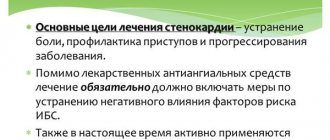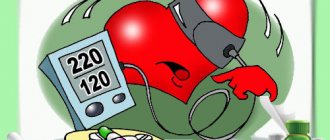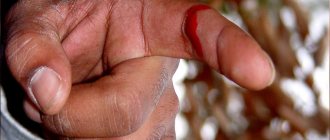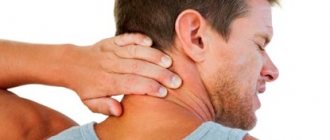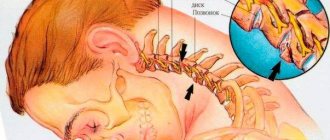6 years of torment for me are over forever, but someone is now experiencing the same thing that I was then - my whole life has curled up around thoughts of how to even live the next day, how to avoid panic and pain, how to find strength in an exhausted body and soul for all this.
I have a personal blog on Instagram, where I talk about my treatment experience, give useful advice, and in general - together we are strong???? There I write more often and more???? I'll be glad to see you
Subscribe
Valeremal ⏪
So, I already wrote about how I got to see a psychotherapist, having previously bypassed ordinary therapists, undergoing examination and treatment of diseases that I did not have, but had their symptoms. And each such unsuccessful treatment drove me into the realization that this would never end, I would never be cured, my body and its condition would always be a burden and a burden for me, and that all my life I would wake up with horror of the coming day, because I need go outside (then my agoraphobia had already begun). Panic attacks, or as local therapists call them - VSD, vegetative-vascular dystonia, have become the fabric of my life, without leaving my thoughts for a minute. They literally ate me alive.
My main symptoms were panic and terrible nausea, after 5 years they were supplemented by an unbearable urge to “go small”, and later abdominal pain. When was the last time you felt like you were going to throw up? Imagine what it’s like to live in this state for 6 years, 3-10 hours a day of nausea, when you have to sit at the festive table, smile, go to the store (I remember how I couldn’t even stand the line at Magnit, I thought I was going to throw up on standing in front, threw shopping and ran out), ride in a car with relatives, go to work!
At the same time, I hid from everyone that I was sick. Yes, I didn’t even know what I was sick with. As a result, I came to complete agorophobia and one day I could not bear a 2-minute car ride, causing such a panic attack that everything fell into place for everyone and I was sent to a private psychoneurological center.
What is VSD?
In order to understand the nature of the origin of dysfunction, it is necessary to become familiar with the concept of the autonomic nervous system. The ANS is part of the nervous system, its department, which is responsible for the balance of the internal environment of the body, and also controls the functioning of the internal organs of a person, and in case of certain failures regulates their condition. An important point is that the autonomic nervous system is autonomous, its activity is not controlled by the human consciousness. If the balance of the activity of internal organs is disturbed for any reason, various types of disorders arise. Doctors are increasingly confident that the disorder is a consequence of the modern fast pace of life and occurs in both children and adults in a ratio of approximately 30/70%. We can say that the consequences of modern fast-paced life are vegetative-vascular dystonia. It is quite possible to get rid of it forever using folk remedies, medication and with the help of physiotherapy, the main thing is to understand the background of which disease the symptoms arise.
How to get rid of panic attacks forever
Working through the condition
I recommend taking feelings of despair, helplessness, hopelessness and pessimism as the primary goals for working through.
All these unpleasant sensations need to be worked through one by one until you feel better and the feelings are no longer so painful. We use TPP. (see before this chapter).
Often, immediately after working through feelings of despair and hopelessness, anxiety appears. This is your chance to work it out.
In addition, use EFT to work on specific physical symptoms such as shortness of breath, chest pain, muscle tension, numbness, and nausea.
Work with each symptom separately. Choose what bothers you the most and work with it.
Another important aspect that needs to be worked out using the EFT method is your attitude towards yourself.
It also plays a role. Very often there is a feeling of dissatisfaction with oneself, anger at oneself, contempt for oneself, etc. create the basis for the development of psychosomatic disorders. Work through the negative feeling towards yourself until it changes to a warm feeling of acceptance. This is also very important and necessary.
Causes
The causes of autonomic dysfunction include:
- genetic inheritance, i.e. some signs of dystonia can be observed already in childhood;
- diseases of the nervous system - central, peripheral (malfunction of the hypothalamus, brain stem);
- chronic diseases of the cardiovascular, endocrine systems, gastrointestinal tract;
- stress, constant overwork, overexertion;
- alcohol abuse;
- smoking;
- depression, anxiety, emotional or mental instability.
Most often, the condition of dystonia occurs in the form of neurosis with symptoms very similar to those of various chronic diseases. The development of the disorder occurs after severe stress, and the human psyche does not accept the traumatic situation, but seems to project it onto the internal organs. Manifestations of autonomic dysfunction can affect a variety of organs and systems, individually or together.
As noted earlier, the autonomic nervous system regulates biochemical and physiological processes in the body: from maintaining normal human body temperature and normal blood pressure levels to the activities of the endocrine, immune systems, etc.
Manifestations of VSD
Let's look at the most common syndromes that vegetative-vascular dystonia leads to. Symptoms in adults may include:
- Cardiovascular syndrome, which is expressed by bradycardia, tachycardia, i.e., heart rhythm disturbance; blood pressure disorders; chilliness of the limbs; pallor of the skin. In this case, aching pain and discomfort in the heart area occur, not associated with physical activity.
- Rapid and difficult breathing, constant lack of air - all these are signs of hyperventilation syndrome. It occurs because the composition of the blood changes, a high alkali content is observed due to the loss of carbon dioxide, as a result of which the respiratory center is depressed. All this leads to muscle spasms, loss of sensitivity in the limbs, and the person experiences dizziness.
- Sexual disorders. In men, erection decreases; in women, vaginismus may occur.
- Disturbances in the gastrointestinal tract manifest themselves in the form of discomfort during and after meals, nausea, and vomiting.
- Cystalgia is frequent and painful urination without changes in the urine.
- Increased sweating of the palms and soles of the feet.
- A constant slight increase in temperature and chills characterize a violation of thermoregulation. This phenomenon is often observed in childhood.
How to get rid of panic attacks yourself
The most important thing you must learn:
To survive a panic attack, you need to stop resisting it.
Resistance only creates tension. There are several ways to break resistance.
First way
Instead of consciously controlling your state, it is better to redirect your attention to something else, for example, to the feeling of fear itself.
Start exploring how you feel during a panic attack. Take a pen and notepad and carefully describe all the nuances of your condition during the attack. Write down the time and place of its occurrence, what preceded it, what thoughts and pictures run through your head during the attack, what bodily sensations you experience. Describe your breathing patterns, etc. By immersing yourself in work, you will notice how your condition begins to change.
Second way
It's called the paradoxical injunction. As soon as you feel a feeling of fear and an impending panic attack, your task is to concentrate your attention on this fear and begin to actively strengthen it.
Watch the video (total 8 minutes)
Paradoxically, you will feel that when you try to increase fear, it begins to disappear. Those. Your task is to bring the state to the maximum intensity as possible. This is the only way you will be able to overcome your resistance and feel relief.
Third way
Switch using strong sensory stimulation. Such a stimulus can be irritation of any of our channels of perception - vision, hearing, smell, touch or taste buds. The stimulus must be quite strong and different from what we usually experience in everyday life.
One of my clients wore a bottle of cologne. When panic set in, she took a deep breath, bringing the bottle to her nose, and then began to rub her palms (stimulating the sense of touch). Sometimes she used small pebbles or rough surfaces to achieve the desired level of stimulation. Another client, to redirect his attention during a panic attack, rubbed his ears, kicked off his shoes and walked barefoot, focusing on the sensation of the surface under his feet. A strong taste, such as sour or astringent, can also be a good stimulus. From such a variety you can choose a technique and use it.
Fourth method
Use EFT – Emotional Freedom Technique. It will be discussed below.
Emotional Freedom Technique (EFT)
In my practice, it has been proven that EFT has proven itself to be a technique that helps overcome panic attacks and increased anxiety. This technique consists of tapping yourself with two fingers 2-3 times, not hard, but noticeably on certain areas of the body. 13 main points are used.
The first point is called the eyebrow point, it is located at the beginning of each eyebrow near the bridge of the nose.
The second point is the point on the outside of the eye, located on the cheekbone under the place where the eyebrow ends.
The third point - the point on the outside of the eye - is on the cheekbone under each eye, exactly in the center.
The fourth point is the point under the nose, between the nose and the upper lip.
The fifth point is the point under the lower lip, in the depression between the lower lip and the chin.
Watch the video (only 10 minutes)
The sixth point is a point under the collarbone, in the depression between the collarbone and the first rib not far from the sternum.
The seventh point is a point under the arm, approximately 15 cm below the armpits, at the level of the nipples in men and at the level of the bottom strip of the bra in women.
The eighth point is on the side surface of the finger in the area where the nail begins to grow, on the side opposite to the one facing the index finger.
The ninth point is on the side surface of the index finger, in the area where the nail begins to grow, on the side facing the thumb.
The eleventh point is the point of the little finger, on the lateral surface of the little finger in the area where the nail begins to grow, on the side that looks at the ring finger.
The twelfth point is on the back of the hand, in the cavity between the knuckles of the ring and little fingers.
Thirteenth point – on the edge of the palm, under the little finger, in the center of the edge of the palm
Choose one specific feeling that you want to work with.
Start tapping the fingers of one hand on the thirteenth point - the point of the edge of the palm - and at the same time concentrate as much as possible on the unpleasant feeling with which you are working. Your task is to allow yourself to experience this feeling as fully as possible. Don't resist him. Open up to this feeling, go into it, no matter how unpleasant it was. it's called acceptance.
Keeping your attention on the unpleasant feeling, begin to tap all the points in a row, starting with the first and further in order, until you return to the thirteenth.
Assess the intensity of the feeling. Most likely it will decrease. It is likely that you will have to repeat the exercise 2-3 more times before you experience significant relief. Tapping is best done with two fingers – the middle and ring fingers.
Eye movement desensitization and reprocessing (EMDR)
During this exercise, the person is asked to move their eyes intensely from edge to edge. In one round, a person performs about 40 continuous movements (20 movements back and forth). After which the eyes are given a break. This is usually used to work through unpleasant memories.
Imagine a picture of such memories, immerse yourself in the sensations that it evoked in you, then begin to quickly move your eyes. In my practice, after the first round the picture seemed to move away.
Watch the video (only 3 minutes)
After the second round, the picture became even further away and seemed to blur.
After the third round, the picture was flat and almost unreal, and became smaller in size. The unpleasant feeling was reduced by half.
This exercise is repeated until the intensity of unpleasant sensations becomes zero.
But this exercise is not recommended if it causes discomfort in the eyes.
How is the diagnosis made? First signs of dysfunction
Since asthenia is a syndrome that is a consequence of overwork in the simplest case and a consequence of a disease requiring treatment in a more severe situation, the most correct approach in the treatment of a pathological condition would be to eliminate the reasons why vegetative-vascular dystonia occurs. It is possible to get rid of the syndrome forever at home with the help of traditional medicine, but we must remember that it is a mistake in treatment to fight only the symptoms of the pathology. First you need to see a doctor. As a rule, it all starts with an initial examination by a neurologist and therapist, which may be supplemented by a blood test for hormones, an MRI of the brain, and an electrocardiogram of the heart. Next, the specialized specialist must find out whether a real (organic) disease is present in the body or not. In addition, a psychotherapist or neurologist determines the reason why a functional failure occurred in the body. Many people are embarrassed that they have to communicate with a psychotherapist on rather sensitive topics, but it is important to know that health is the most valuable thing a person has, and it should be dealt with first of all. In addition, neuroses do not belong to severe mental illnesses such as schizophrenia.
At the initial stage, gradual changes may occur in a person’s body, at first imperceptible and not too obvious. Lack of vacation, proper rest, sedentary lifestyle, insufficient sleep, stress at work, conflicts with others and generally poor socio-economic conditions can become an impetus for the development of the disorder.
Treatment of VSD using the Kurpatov method
Vegetative-vascular disorders that arise as a result of prolonged depression or neurotic disorder can be successfully corrected with the help of audio training. They can be purchased in stores or downloaded from the Internet. It is recommended to listen to recordings regularly, in the evening, when the body is relaxed. The patient is advised to set aside a period of time when no one will distract him.
Dr. Kurpatov’s training will help you get rid of vegetative-vascular disorders that have arisen as a result of prolonged depression.
An excellent option would be to combine audio training with a relaxing bath. It’s simple to prepare: you need to add a few drops of patchouli, sage or rosewood essential oil to the finished bath (you can use any other scent that allows you to relax, except for invigorating citrus and pine aromas).
Diagnostic methods
The diagnosis of “vegetative-vascular dystonia” is a fairly common phenomenon, but in order to make this diagnosis, the doctor needs to conduct a lot of research, study the patient’s lifestyle and come to some conclusion. And sometimes this is not at all easy to do, since many diseases are disguised as a syndrome called “vegetative-vascular dystonia”. Symptoms in adults may also characterize other functional disorders and diseases. Specialists competent to make such a diagnosis may include not only therapists, but also neurologists and cardiologists. At the same time, the main diagnostic methods that are used when vegetative-vascular dystonia is suspected include:
- ECG (electrocardiography) allows you to assess the condition of a person’s heart. Typically, monitoring of the human cardiac system using an electrocardiogram is performed daily for a certain period, prescribed by a specialist in each specific case individually.
- Rheovasography is a recording of the pulse and blood filling of organs and tissues, displayed graphically.
- Gastroscopy is an examination of the gastrointestinal tract using an endoscope, which allows you to assess the condition of the gastric mucosa. An endoscope is a flexible tubular device with a lighting device.
- Electroencephalography allows you to assess the state of the nervous system. Typically, graphical recording of electrical impulses of the brain is carried out.
- The CT (computed tomography) method is a study that uses X-rays to obtain cross-sectional images of the human body. The technique allows you to see the smallest changes in tissues, which cannot be tracked on a regular x-ray. In addition, the impact of rays on the body with CT is much lower.
- Nuclear magnetic resonance (NMR) is a method that allows you to obtain a multilayer, three-dimensional image of organs in various planes.
Taking into account these examinations, a diagnosis is made and a treatment regimen is prescribed. It should be noted that therapeutic tactics include a whole range of actions. Among the measures aimed at improving the patient’s condition prescribed by specialists are treatment with medications and folk remedies, herbal medicine, lifestyle changes, and giving up bad habits.
Additional recommendations
A complete cure for vegetative vascular dystonia is possible only in cases where the patient learns to properly manage his emotions and be in harmony with himself.
Frequent walks in the fresh air, swimming, and yoga are reliable helpers for restoring the nervous system and bringing the body to a calm state. Lead a measured lifestyle, subject it to a regime at least for a while. Give up bad habits, create your own traditions and rituals - regular tea drinking, an aroma lamp with healthy oils, reading a book before bed or keeping a diary. Gradually, day by day, the body will return to normal and the disease will recede forever.
Improving quality of life
- It is necessary to adjust your daily routine. A mandatory requirement is adequate sleep. The average sleep duration should be at least 8–9 hours daily.
- It is necessary to optimize not only work, but also proper rest. Doctors recommend alternating mental stress with physical exercise. Auto-training and other methods of psychological relief will be useful.
- Sport is the most important factor in the life of any person. Swimming, walking, skiing, and hiking will help you keep yourself in good shape, as these types of exercises train your blood vessels and heart muscle.
- A balanced diet will ensure sufficient intake of potassium and magnesium salts into the body, which are involved in improving the functioning of blood vessels and the heart, and help restore balance between parts of the autonomic nervous system.
- Massage and acupuncture improve blood circulation and the general condition of the body.
- Psychological correction. Each psychotype is susceptible to the effects of vegetative dystonia to varying degrees. Sanguine people, for example, tolerate illness more easily and recover faster. Melancholic and choleric people are more vulnerable in this regard.
- In addition, smiling is a simple but effective way to activate areas of the brain that are responsible for positive emotions. Smile more often, it increases your vitality.
How is vegetative-vascular dystonia treated?
Treatment (drugs for the treatment of vegetative-vascular dystonia are quite varied) should in no case be avoided for this syndrome. In each specific case, it may vary depending on the severity of the manifestations, as well as on the reasons due to which the pathological condition developed, on the diseases against which the symptoms appeared. Antidepressants and tranquilizers are often used in therapy. The dosage is determined by the doctor. Typically, the minimum period for taking such drugs is 6 months, although the effect may occur within two weeks. Tranquilizers are drugs that relieve anxiety. They are prescribed for at least a month. Such drugs include, for example, Afobazol.
If the patient has unstable blood pressure, he is prescribed antihypertensive drugs; for hypotension, caffeine and ginseng, B vitamins. If heart problems are pronounced, such as tachycardia, β-blockers are prescribed.
For venous insufficiency, headache, heaviness in the head, take Vasoket, Venoplant, Detralex for 1-2 months. For noise in the head, add Betaserc.
For asthenic syndrome, neuroprotectors, antioxidant complexes, as well as drugs that improve blood circulation are prescribed - Nootropil, Ildronate, Glycine.
Most medical centers, including narrowly focused ones, such as cardiology, offer their services for the treatment of illness. It must be remembered that only under the strict guidance of doctors should one get rid of the diagnosis of “vegetative-vascular dystonia”. Treatment in Novosibirsk is provided by the Serdechko network of cardiology clinics. Consultations are conducted by specialists of the highest category. The center is located at: Krasny Prospekt, 6. You can make an appointment by calling (383) 255-44-55 on weekdays.
Treatment of vegetative vascular dystonia
Treatment of VSD includes normalization of sleep and rest patterns, physical therapy, diet, cessation of smoking and alcohol abuse. Physiotherapeutic (for example, massage) and water treatments may also be prescribed.
Important. The administration of multivitamin complexes (especially complexes with B vitamins and magnesium) and light herbal sedatives is effective.
Symptomatic therapy is also carried out (nootropics, antispasmodics, antihypertensive drugs).
Herbal medicine
As noted above, there are a huge number of diseases of internal organs, against which vegetative-vascular dystonia occurs. Herbal treatment comes down to the use of herbal raw materials that have a calming effect, have a positive effect on the nervous system, normalize mood, relieve anxiety and tension:
- Melissa is a sedative that the doctor Avicenna isolated from many herbs that have a positive effect on the heart. Melissa is used in the form of decoctions and infusions.
- St. John's wort, a natural antidepressant, reduces anxiety and normalizes sleep. Many sedatives contain it in their composition. For example, “Novo-Passit”, “Deprim”.
- Hops are a pain reliever.
- Hawthorn normalizes the heartbeat, lowers blood pressure, and calms.
- Mint has a hypnotic effect, calms, and reduces nausea.
- Valerian relieves psycho-emotional stress.
The use of herbs in the form of infusions, tinctures and decoctions is a truly wonderful way to put the body in order and forget about what vegetative-vascular dystonia is. It’s not difficult to get rid of dysfunction forever at home. For example, you can use a recipe that requires birch buds, chamomile, St. John's wort, elecampane root and honey. All components must be crushed, poured with cooled boiling water, brought to a boil over heat again, cooled and allowed to brew. Add a tablespoon of honey. It is recommended to take half a glass of the decoction in the morning before meals. The effect appears after a month of regular use. People suffering from this syndrome will feel an improvement in their condition, will be able to significantly improve their quality of life, get rid of pressure surges, increased sweating, and the fears and anxiety states that vegetative-vascular dystonia causes.
Treatment with homeopathy must also be carried out under the supervision of a specialist, because the effect of herbs in the body manifests itself in the form of a cumulative effect, i.e. the result of taking them is not immediately obvious. Exceeding the dose of substances contained in herbs in the body, as well as an overdose of medications, is dangerous to health. In addition, we must remember that asthenia is a syndrome that occurs against the background of other diseases and is manifested by various symptoms that characterize functional disorders of the body. Failures in the functioning of various systems - cardiovascular, nervous, endocrine - all this is vegetative-vascular dystonia. Treatment with traditional methods will give even better results in combination with other methods, such as physiotherapy and psychological techniques.
Symptoms
Vegetative-vascular dystonia can manifest itself as symptoms of diseases of various organs:
- Cardiological type - patients complain of pain in the heart, palpitations, shortness of breath.
- Respiratory type – complaints of shortness of breath, lack of air, cough.
- Neurological type – headaches, dizziness, sweating, trembling in the limbs.
- Vascular type - the main complaints are changes in blood pressure.
- Gastrointestinal type – patients experience worsening appetite, nausea, vomiting, and digestive processes are disrupted.
- Mixed type - there are symptoms of functional disorders of several organs.
With all types of VSD, patients complain of fatigue, headaches, appetite disturbances, and general deterioration of their condition.
Treatment at home
Treatment of VSD at home must be comprehensive. It is impossible to cope with the symptoms of pathology only through diet, exercise or medication.
Learn more about how this disease should be treated by a doctor, as well as by traditional methods.
To completely get rid of the symptoms of VSD, it is recommended to undergo a full examination by a neurologist, exclude somatic, neurological and endocrine disorders and be treated under the supervision of a specialist.
At home you need:
- change sleep and rest patterns;
- change your diet;
- engage in sports or physical therapy;
- Learn methods of stress relief and relaxation techniques.
Sleep and rest mode
The main cause of VSD is stress and overwork. You can get rid of most of the symptoms of the disease simply by changing your lifestyle.
You need to create a clear schedule for work, sleep, rest and nutrition and follow it constantly - not only during treatment, but subsequently.
- Sleeping at least 8 hours a day is the most important condition for treating VSD. Only during this time does the nervous system have time to fully recover, so during the treatment period it is recommended to go to bed at 21-22 o'clock and sleep until 6-7 o'clock in the morning. If this is not possible, then sleep another 1-2 hours during the day.
- Work no more than 8-9 hours a day - during treatment you need to completely abandon any overtime, additional work, and so on.
- Rest every day for 1-2 hours - every day you need to find time for proper rest - a walk in the fresh air, playing your favorite sport or just relaxing on the sofa or bed. During this time, you cannot use any gadgets or watch TV - as this excites the nervous system and does not allow it to rest.
- Reducing the time spent watching TV shows, social networks, computer games, and so on is another important factor in the treatment of VSD. You can spend no more than 1 hour a day in front of a computer, smartphone or TV screen.
- Spend at least 1 hour in the fresh air every day - it is most beneficial to walk before bed or in the evenings.
- Playing sports or exercising will help strengthen the nervous system, blood vessels and the body as a whole. You need to exercise daily, at least doing exercises or warming up for 15-30 minutes and doing some kind of sport or physical exercise 2-3 times a week.
- Avoid hypothermia and overheating - with vegetative-vascular dystonia, it is important to wear comfortable, fairly warm clothes that will help avoid both overheating and hypothermia. Be sure to ventilate the room daily, ventilating before bed or sleeping with the windows open is especially useful.
Change your diet
Correcting the diet is no less important for VSD. A lack of vitamins and minerals in the diet leads to weakening and exhaustion of the nervous system. For its normal functioning you need:
- Avoid processed foods. They contain many spices, various additives and preservatives that cause overstimulation of the nervous system.
- Reduce salt intake. Not only “under-salt” your dishes, but also avoid foods that contain a lot of sodium chloride: pickles, smoked fish or meat, chips, French fries, and so on.
- Eliminate spicy, smoked and fatty foods from your diet. Such foods increase the load on the liver and digestive system.
- Reduce consumption of sugar, baked goods and sweets. The diet should also not contain foods that contain a lot of easily digestible carbohydrates.
- Completely avoid coffee, strong tea and spices. All these substances excite the nervous system, preventing it from fully resting and recovering.
The diet of a patient with VSD should consist of cereals, lean meat and fish, vegetables, fruits and dairy products. Also recommended are foods such as bananas, buckwheat, unrefined grains, sprouted wheat, nuts, legumes and greens.
Be sure to drink 1-2 liters of clean still water per day and eat small meals - 4-6 times a day. The last meal should be no later than 2-3 hours before bedtime.
Herbal medicine for various types of VSD
There are two types of vegetative-vascular dystonia – hypertensive and hypotonic. In accordance with them, herbal complexes that are different from each other can be used in treatment. For example, for dystonia of the hypertensive type, soothing herbs are often used together with hawthorn, marsh grass, and rose hips. Hawthorn infusions are taken a quarter glass 4 times a day before meals. The decoction is made as follows: pour 1 tablespoon of flowers with 1 glass of boiling water and leave for about 2 hours. In this case, you should reduce the amount of salt, caffeine, and alcohol in your food. Limit fatty foods. Add natural vitamins to your diet - vegetables, fruits, herbs, as well as garlic and chocolate.
For vegetative-vascular dystonia of the hypotonic type, ginseng and eleutherococcus are prescribed, which increase blood pressure and have tonic properties. However, these herbs should not be used for insomnia. Ginseng tincture is taken for a month in the morning, before meals, 1 teaspoon. Today, a wide range of herbs are presented in pharmacies in the form of alcohol tinctures.
Stress relief and relaxation techniques
Stress provokes anxiety, insomnia, and other sleep disorders. As a result, the body cannot fully recover, and this is very important for vegetative-vascular dystonia.
A relaxing massage of the collar area and head is very useful. There are also special meditations that need to be performed before going to bed while lying in bed. Some of them adjust the body to sleep, others help to tune in to a calm mood and a positive perception of reality. Breathing during meditation becomes rhythmic, slow, deep, which in itself promotes relaxation. Sometimes meditative techniques contain elements of visualization and are accompanied by the sounds of nature, singing or musical instruments. Before going to bed, you should not overload your nervous system with “heavy” books, films, reading negative news, gambling and similar activities.
There are special relaxation techniques that are used for vegetative-vascular dystonia. This is Jacobson's relaxation (a set of exercises to relax individual muscle groups) and Jacobson's method (phases of tension and relaxation, observation and mental relaxation).
Physiotherapy
To eliminate the symptoms of VSD in adults, it is necessary to exclude various diseases against which this syndrome occurs. Among them are diseases of the thyroid gland, adrenal glands, mental disorders such as neuroses, neurasthenia, changes in brain structures. Oxygen, pearl, and aromatic baths, which have a calming effect, have a good effect on restoring the body’s adaptive capabilities. A circular, fan shower improves the body's metabolic processes, accelerates metabolism, restores skin functions, and helps eliminate the signs of a syndrome such as vegetative-vascular dystonia. Treatment at the sanatorium includes a whole range of physiotherapeutic procedures, such as electrophoresis using medicinal solutions for the cervical spine; sinusoidal currents; paraffin applications on the occipital region; physical therapy, reflexology.
Sports and physical therapy
Regular exercise and moderate exercise help strengthen blood vessels, the cardiovascular and respiratory systems. They are necessarily included in the standard treatment program for VSD of any type.
You can engage in sports or physical therapy only after consultation and under the supervision of a doctor, since it is necessary to determine the volume of permissible loads and monitor blood pressure, pulse and other important indicators after such activities.
The optimal sports for VSD are:
- Swimming is considered the safest and most effective sport for VSD. Swimming is recommended for all patients without exception - the desired program can be selected for patients with any level of health, regardless of the severity of the condition and age.
- Running – for patients with VSD who have just started playing sports, sports or Nordic walking or slow running is recommended. The load should be increased gradually, starting training from 15-20 minutes.
- Cycling – cycling not only strengthens muscles, but also helps get rid of nervous tension and emotional overload.
- Skating or skiing - regular exercise also has a beneficial effect on the state of the nervous system. These seasonal sports can be combined with walking or swimming.
- Therapeutic exercise is recommended for those patients whose symptoms of VSD are pronounced or for patients with concomitant somatic pathology. An individual training program is drawn up for each patient, depending on his condition and general physical fitness.
- Yoga – Yoga helps strengthen muscles, as well as relieve stress and nervous tension.
- Breathing exercises are a very effective method for treating VSD. But to achieve the effect, training under the guidance of an experienced specialist is necessary.
Literature on vegetative-vascular dystonia
Many people are confused when they see the diagnosis of “vegetative-vascular dystonia” in an outpatient card. Numerous recipes from our ancestors will help you get rid of the signs of the disorder forever using folk remedies. They used the power of natural plants for healing.
In addition, contemporary writers, people who know firsthand and from their own experience what vegetative-vascular dystonia is, share secrets in their works. For example, Andrei Kurpatov in the book “A Remedy for Vegetovascular Dystonia” gives advice to people suffering from this disease on how to behave with the disorder in order to improve their condition and forget what vegetovascular dystonia is. Kurpatov also recommends getting rid of harmful thoughts, fears and unhealthy lifestyles forever.
However, Andrei Kurpatov is not the only author of such books. The reader is also familiar with the name of the doctor Nikolai Grigorievich Mesnik, the author of the method of treating pathology with folk remedies. In the book “Vegetative-vascular dystonia. Get rid of it forever! Nikolay Mesnik helps people find their own path to health.

